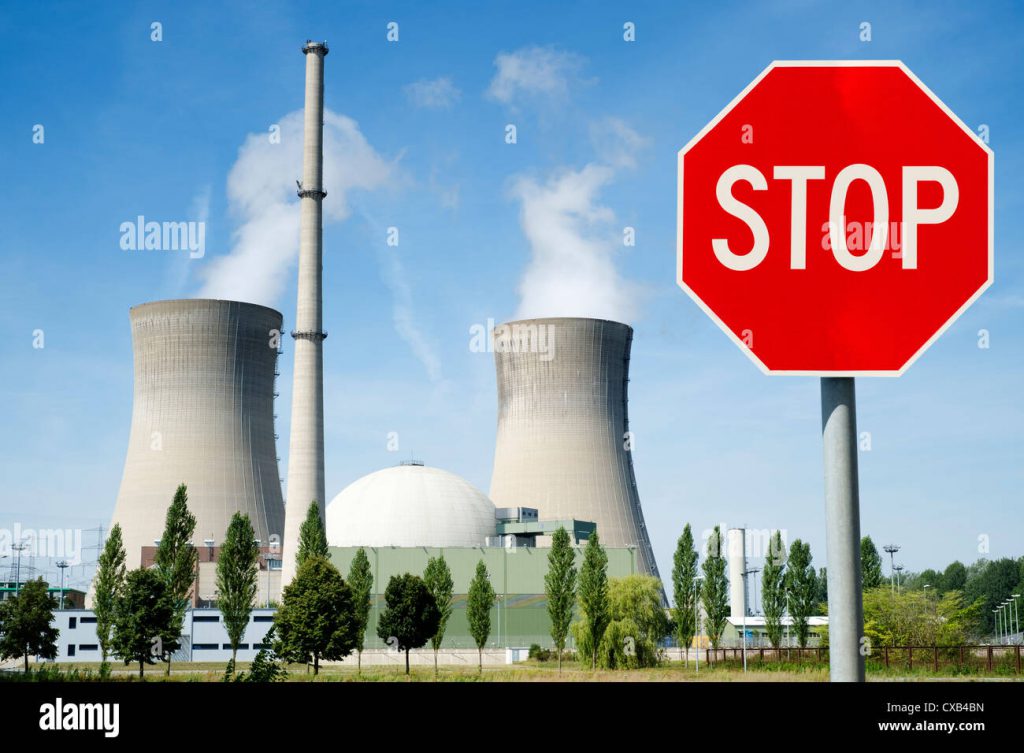The Brokdorf nuclear power station, which sits between moist meadows and a dike coated with a thin layer of snow, is being buffeted by an arctic wind.
“Shut down nuclear power plants,” says a yellow banner posted by a small gathering of primarily elderly people on the guarded gate to the nuclear reactor.
The activists gathered on this snowy, bleak day in Schleswig-northernmost Holstein’s state are largely from the region, though others have traveled from Hamburg and beyond.
The groups look well-adjusted to the severe cold, singing peace songs and conversing while standing in a circle, having convened outside the power plant’s gate on the sixth day of each month for the previous 35 years.
Activists are holding a vigil today to remember the victims of nuclear disasters while simultaneously calling for the nuclear reactor in their area to be shut down.
Today, though, is a different story. This is the 425th and last vigil. The Brokdorf nuclear power facility will be shut down later this month as part of Germany’s nuclear phaseout by 2022.
The reactor has been one of Germany’s most contentious as well as one of the most productive in the world.
Hans-Günter Werner, a pastor and co-founder of the activism campaign, said, “I’m glad it’s being phased out.” “I’m not sad, but I’m a little nostalgic because I know we won’t be seeing each other again anytime soon.”
“But, for the most part, I’m relieved that the nuclear power plant’s operations are finally coming to a close,” he concluded. “We didn’t anticipate having to stand here for so long at the time.”
Hundreds of thousands opposed the construction of the nuclear reactor at Brokdorf in the 1980s, amid a burgeoning anti-nuclear movement.
Protesters battled with police on several occasions, particularly following the Chernobyl nuclear disaster in 1986, which resulted in higher radiation levels in soil and foods across Germany.
“I used to have tiny children who couldn’t play in the sandbox. “We were all terrified,” Werner stated on the margins of the vigil.
Brokdorf was the world’s first nuclear plant to start up following the Chernobyl tragedy, opening in late 1986.
Werner and a few companions protested peacefully at the moment, and they agreed to keep protesting in the future. They agreed to meet every month until Brokdorf was decommissioned.
“Showing opposition” and demonstrating, he continued, “assisted us in combating our own fears.”
His worries were well-founded. A research published in 2008 discovered that youngsters growing up near a German nuclear power station have a greater chance of acquiring leukemia.
Despite the dangers, plants remained open. One factor might be the Brokdorf municipality’s decades of high earnings from a commercial tax on the facility.
Local lawmakers were adamant about not giving up this revenue.
With the nuclear plant levy, the community of less than 1,000 residents was able to construct an ice rink for €7 million ($8 million), while admission rates for the public swimming pool with a 100-meter water slide were kept exceptionally cheap.
While Germany plans to decommission all of its remaining nuclear power facilities by the end of 2022, other nations such as France, the United Kingdom, the United States, India, Russia, and China continue to rely on nuclear power.
Across 440 nuclear reactors are still operational around the world, supplying around 10% of the world’s energy supply. This year, 50 nuclear reactors are being built, with 18 of them being built in China.
More than 300 nuclear power stations are now in the planned stages. Meanwhile, the nuclear power lobby promotes nuclear power as a supposedly clean and, most crucially, climate-friendly energy source.
For the first time in decades, French President Emanuel Macron said this year that, in order to attain carbon neutrality by 2050, France will revive plans to build new smaller nuclear facilities.
Nuclear energy produces much fewer emissions than coal, oil, and natural gas.
According to Andrew Stirling, professor of science and technology policy at the University of Sussex, the fact that nations continue to use nuclear power has another explanation.
“Those countries that are most truly committed to a civil use of nuclear energy either have nuclear weapons or are very interested in getting them,” he said.
According to Stirling, civil nuclear energy is frequently required for the implementation of nuclear weapons programs, a fact acknowledged by nuclear-armed France and the United States.
The Brokdorf activists reminisce over 35 years of protests over coffee, cake, and pumpkin soup.
Images from private picture albums are included in photo collages.
Despite the fact that Brokdorf will be decommissioned on December 31, the plant will continue to operate as a temporary nuclear waste storage site for decades. There is still no permanent home for radioactive waste.
